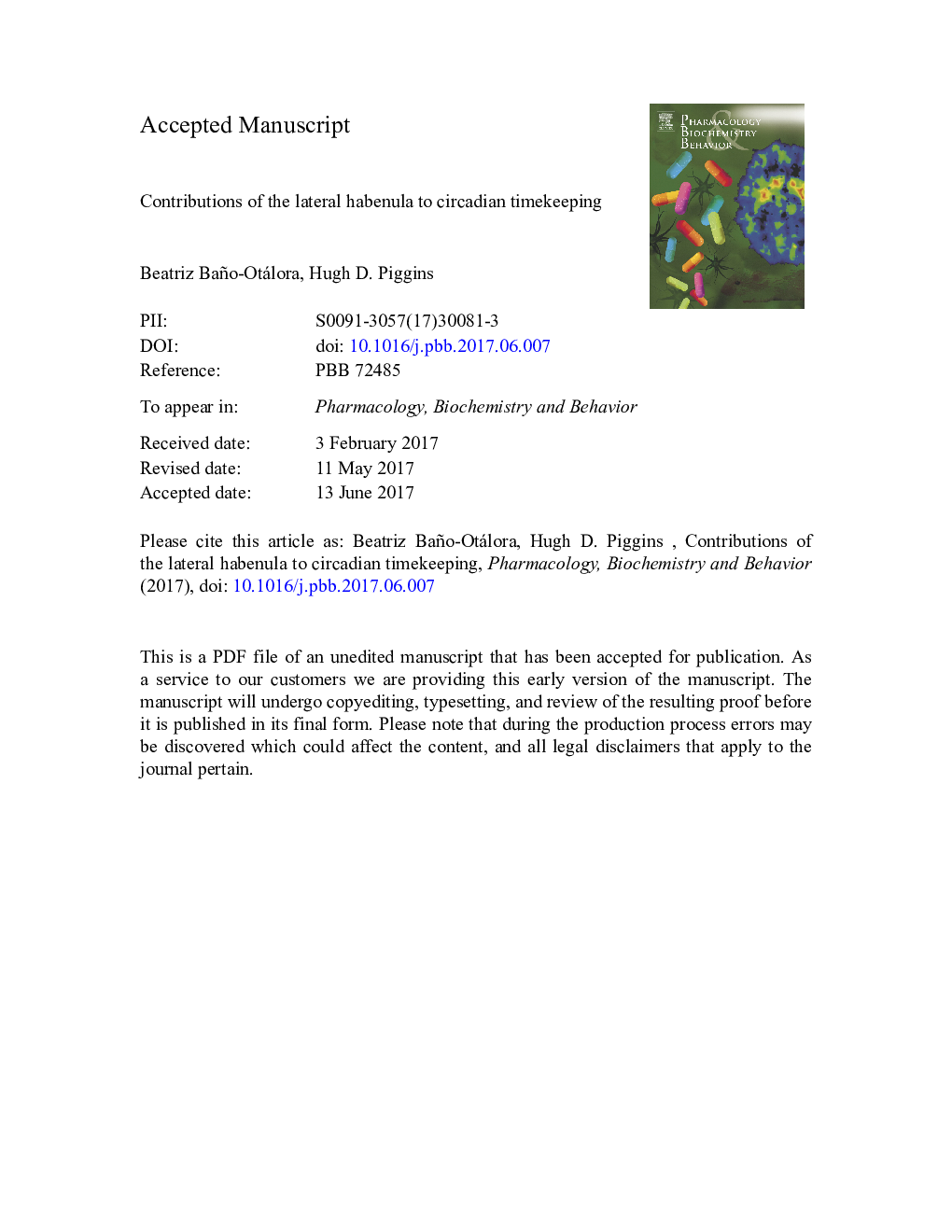| کد مقاله | کد نشریه | سال انتشار | مقاله انگلیسی | نسخه تمام متن |
|---|---|---|---|---|
| 8350198 | 1541825 | 2017 | 32 صفحه PDF | دانلود رایگان |
عنوان انگلیسی مقاله ISI
Contributions of the lateral habenula to circadian timekeeping
ترجمه فارسی عنوان
مشارکت های حجاب جانبی به زمان بندی روزانه
دانلود مقاله + سفارش ترجمه
دانلود مقاله ISI انگلیسی
رایگان برای ایرانیان
کلمات کلیدی
VTALHbipRGCsSCNRMTgGRPSFRFasciculus retroflexusAVPspontaneous firing rateTTFL5HTsuprachiasmaticTTXVIPDMHPER2::LUCeGFPpK2LUCLHbLLHbMDBSHabenula - habenulaMedial habenula - habenula پزشکیMHb - MHBtetrodotoxin - تترو دوتوکسین deep brain stimulation - تحریک عمقی مغزlateral habenula - حنابا جانبیper - در هرDopamine - دوپامینCircadian rhythm - ریتم شبانه روزیSerotonin - سروتونینintrinsically photosensitive retinal ganglion cells - سلول های گانگلیونی شبکیه ذاتی حساس به نورluciferase - لوسیفرازPVN - مالیات بر ارزش افزودهlateral hypothalamic area - منطقه هیپوتالاموس جانبیventral tegmental area - ناحیه تگمنتوم شکمیSuprachiasmatic nuclei - هسته های Suprachiasmaticdorsomedial hypothalamus - هیپوتالاموس dorsomedialarginine vasopressin - وازوپرسین آرژینینProkineticin 2 - پروکینتیکین 2Vasoactive intestinal polypeptide - پلیپپتید روده روغنیgastrin-releasing peptide - پپتید آزاد کننده گاسترینperiod gene - ژن دورهClock genes - ژنهای ساعتCry - گریه کردن
موضوعات مرتبط
علوم زیستی و بیوفناوری
بیوشیمی، ژنتیک و زیست شناسی مولکولی
زیست شیمی
چکیده انگلیسی
Over the past 20Â years, substantive research has firmly implicated the lateral habenula in myriad neural processes including addiction, depression, and sleep. More recently, evidence has emerged suggesting that the lateral habenula is a component of the brain's intrinsic daily or circadian timekeeping system. This system centers on the master circadian pacemaker in the suprachiasmatic nuclei of the hypothalamus that is synchronized to the external world through environmental light information received directly from the eye. Rhythmic clock gene expression in suprachiasmatic neurons drives variation in their electrical activity enabling communication of temporal information, and the organization of circadian rhythms in downstream targets. Here, we review the evidence implicating the lateral habenula as part of an extended neural circadian system. We consider findings suggesting that the lateral habenula is a recipient of circadian signals from the suprachiasmatic nuclei as well as light information from the eye. Further we examine the proposition that the lateral habenula itself expresses intrinsic clock gene and neuronal rhythms. We then speculate on how circadian information communicated from the lateral habenula could influence activity and function in downstream targets such as the ventral tegmental area and raphe nuclei.
ناشر
Database: Elsevier - ScienceDirect (ساینس دایرکت)
Journal: Pharmacology Biochemistry and Behavior - Volume 162, November 2017, Pages 46-54
Journal: Pharmacology Biochemistry and Behavior - Volume 162, November 2017, Pages 46-54
نویسندگان
Beatriz Baño-Otálora, Hugh D. Piggins,
